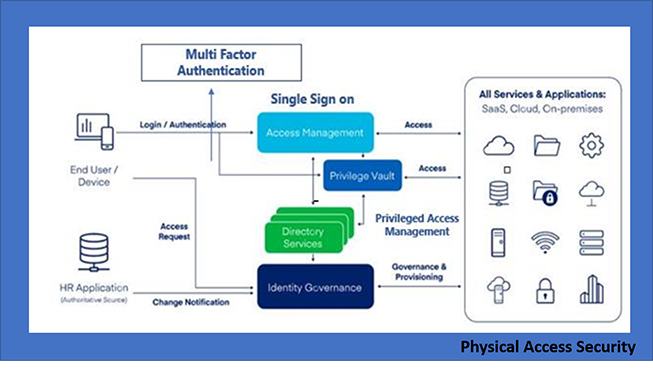As global IT is progressing in Digital Era, Identity is increasingly becoming the control panel for security. Identity-centric approach of improvising the security in corporate networks is getting more traction in recent days. Let’s have a look at what is comprehensive IAM and how it helps in ensuring the corporate network security.
What is Comprehensive IAM?
The term Comprehensive IAM is neither new nor unfamiliar. To give a detailed definition, when Identity and Access Management in a network is comprised of all the minimum requirements to ensure the Identity security, it could be considered as network of Identities secured with comprehensive IAM model, this model of comprehensive IAM is applicable for Hybrid, Cloud and On-Premise infrastructures.
To make the cloud infrastructures comprehensive or to claim that the cloud infra is covered with comprehensive IAM, CLOUD ENTITLEMENT ACCESS MANAGEMENT is a separate topic in itself which could be discussed in much detail.

Here’s a list of components to be covered in any IAM model in network to make it comprehensive
Components
- Identity and Access Management
- Privileged Access Management
- Single Sign On
- Multi-Factor Authentication
- Mobile Devices Management
- Password policies
- Physical Access Security (Access cards and Video recordings)
When all the controls of above-mentioned components are implemented, it could be considered as a Comprehensive IAM model.
Why Comprehensive Model?
For global business entities, security is not a revenue generating factor, but when security is compromised, it has the potential to impact the revenue. It also needs a significant amount of funds to be factored in to address the impact of a security breach. How long it takes to get back to business as usual is a big question mark. To be prepared for such risks which poses a threat to the brand, reputation, and most importantly the customers, targeting the gaps in security from all perspectives is mandatory, below are few modules –
- Compliance
- Governance
- Auditing
- Access Reviews
- Reacting to Violations
- Risk identification
To achieve the above controls, all the components mentioned above should be implemented in a comprehensive model. When it is implemented, by default it provides the path to Zero trust Implementation concepts of Verify Explicitly, Least Privileged Access and Assume Breach, this ensures the network is protected from the external threat surface.
Any OEM in the market comes with this Combination?
Based on my recent analysis, few IAM products in the market supports 3-4 components (IDAM, PAM, SSO, MFA) of MAX, and where the other two majors focus on IDAM and PAM and many individual products companies provides the support for one complete solution where it could be MFA, SSO, PAM end-to-end.
The expectations from the client side could be, rather than doing the case study individually for all the components of this model, there should be “shoppers spot” kind of licenses where it provides the combinations of all the above services in a deal, which could be excellent relief to CISOs of the companies where security implementations are crucial to the business. Yes, it’s a big challenge to develop a product with such capabilities for OEMs, if not OEMs, System Implementation service providers could integrate the products and provide the combo of services “READY TO DEPLOY” in cloud, hybrid and on-premise environments and customize client specific requirements too with a combination of OEMs.
Benefits of this model
- Digital Identity services in a single tower
- Cost effective in terms of implementing multiple products for individual components
- Visibility of Enterprise Solutions for Digital Identity
- No need of orchestration between the components in the enterprise level
- Since the services are coming under single tower, T&M could give effective Return on Investments
I would conclude by reiterating that, “Network Security is not a destination, it’s a continuous improvement.”
About the Author –

Sundaramoorthy S
Sundar has more than 13 years of experience in IT, IT security, IDAM, PAM and MDM project and products. He is interested in developing innovative mobile applications which saves time and money. He is also a travel enthusiast.
Back to blogs
